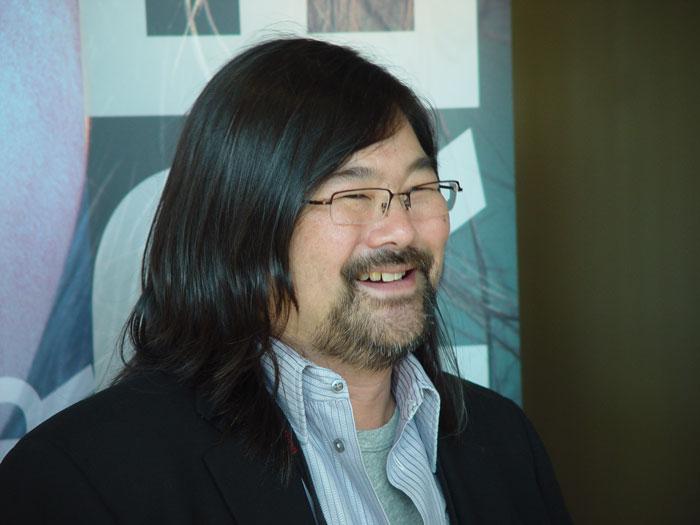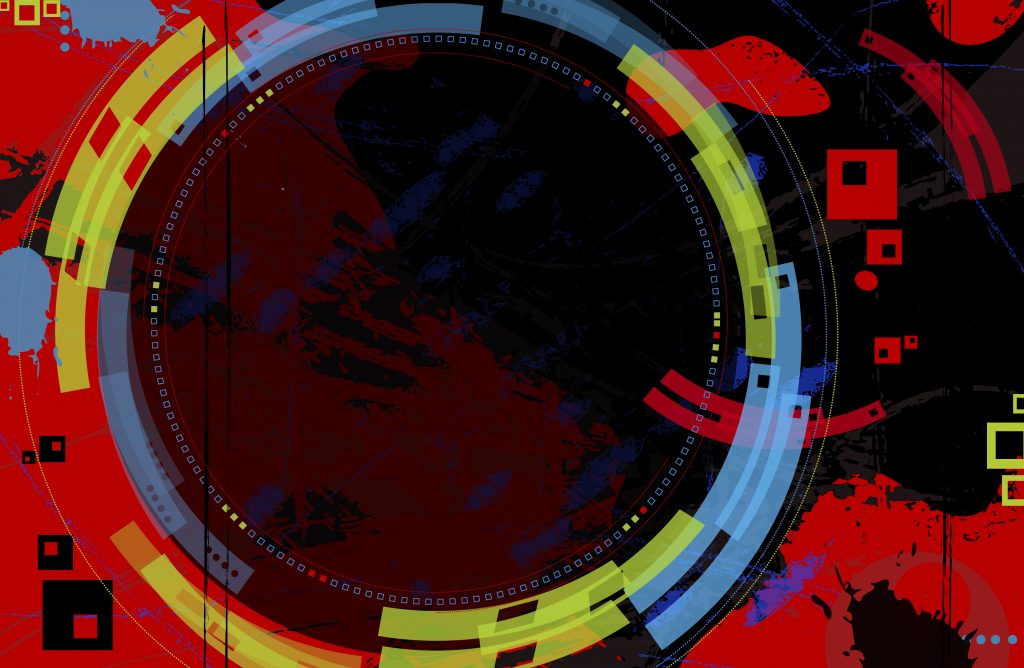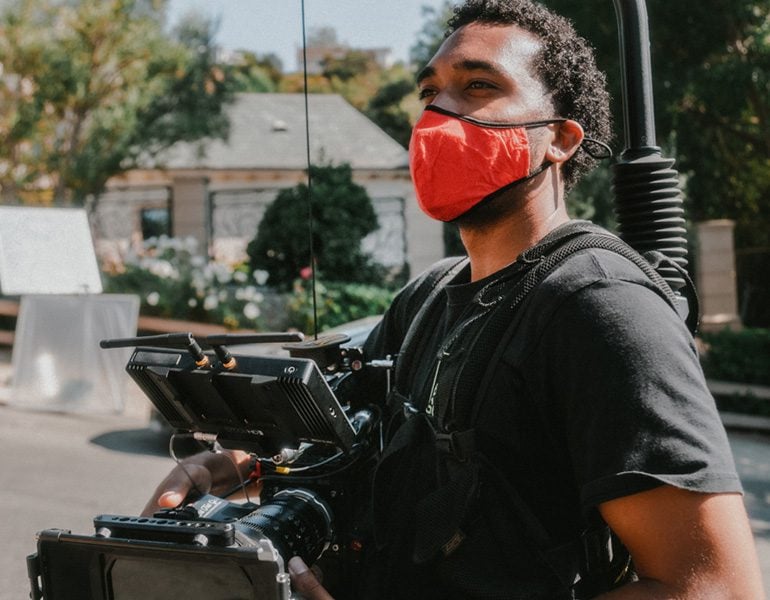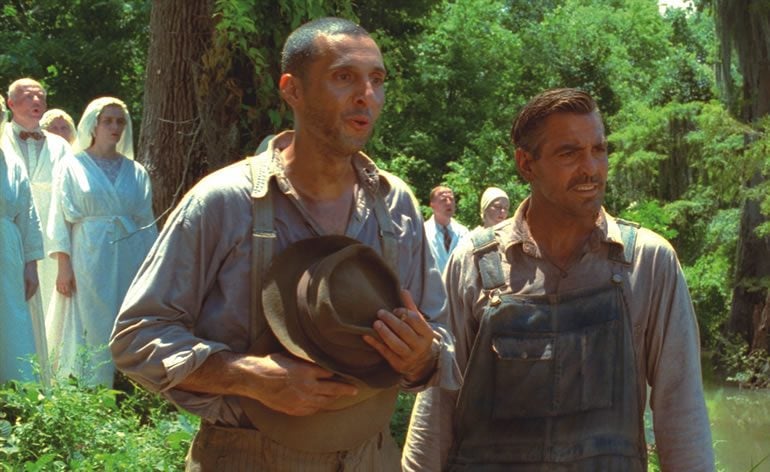If someone wanted to become a member of the ASC what kinds of things would they need to do? This is not necessarily in regards to written rules and guidelines but more in regards to what individuals would need to do in their careers.
Daryn Okada, ASC: Becoming an ASC member, it’s truly an honorary society. I think that in all of our members, as we look at it, we always had hope that one day our work would be of ASC quality. I think that the wrong thing to do is to gear your career to be in the ASC. I think the best thing is, do the work that you love doing.
The ASC is an honorary society based upon a person’s body of work. There really is no recommendation, and I would be wrong to make a recommendation to students as to how to gear their careers to become an ASC member. The best thing for them to do is to do the best, most inventive work they can. That’s how we look at members’ work. It’s not any one type of work. It’s excellence in cinematography. That comes from all areas. They look at all kinds of work, and you can see where there are talents there. But as far as any kind of a recommendation, my recommendation is to get out there and discover yourself shooting, and that’s the best way to be seen.
How did you get started in cinematography, start to discover your interest and explore cinematography?
Daryn Okada, ASC: I started pretty early on. Maybe it was just tinkering at a really young age. I used to do things with Super 8 cameras from probably the time I was nine years old, and didn’t know it was going to lead to a career. I just knew I liked it a lot. You kind of start off with the home movies because that’s the first opportunity. I started discovering there was a slicer and started cutting the home movies together and then thinking, ‘the next time I’m out I’ll do a shot here, and do this shot,’ and put them together and make it a little more entertaining to watch. Because, you know, after you see your family up on a bed sheet for five minutes, it gets a little boring. So I just had a knack and a need to explore photography and cinematography.
As I got into intermediate school and then high school, they definitely had photography classes. There was no cinematography [class] of course. But there was photography as learning the craft and then learning the art form. Learning about photographers and doing it as an art. And that gave me a real appreciation to combine the two. Cinematography just felt like a natural way to go. I wanted to create images that told a story or helped tell a story and kind of provoke an emotion – and yet at the same time, have a purpose, you know, being part of a larger group – it makes that all come together.
By the time I got to high school, if you wanted to be a professional photographer, there were a couple of routes to go, a couple of art schools to go to. My focus was I wanted to be a cinematographer. And, when I was going to school, there were very few people in a high school setting who knew what a cinematographer was. So it was pretty much the beginning of my own exploration as to finding out as much as I could about it, learning about the craft, and then learning about the artists who were practicing the craft. I did that by reading as much as I could. I discovered in a public library the American Cinematographer magazine, which was just eye-opening and incredible. I could not believe I had never heard about this before. It opened my eyes to what was out there in a way that was more than what you would have gathered from any kind of publicity materials that studios put out. They really got into the nuts and bolts, and what the cinematographers are thinking. Then I had to sort of enrich that because I was getting towards the end of high school. There were a few choices as far as film schools for me, but I was of the, sort of, impatient side that I kind of wanted to get my hands on doing things sooner, and then always thought I would catch up by then studying, just taking a strict study course.
I graduated from high school at the end of my junior year, and of course, the first thing I had to do was find a job. I was lucky to find a job as a projectionist at an East Los Angeles city college. At that time, they would have a few films that would come in. They were doing a Japanese film festival, so there were incredible Kurosawa films that came. Since it was a predominantly Hispanic neighborhood, we had films that came from Bunuel. I got to be a projectionist and screen it. Being a projectionist was sort of self taught. Again, it was going to a library and scouring books and finding the Society of Motion Picture and Television Engineers manual on projection. Seeing what the threading diagrams were, and what the practices of standards were. I would go in early to the theater that was on that campus and practice on old pieces of film that were laying around there, threading, and doing all kinds of other things. Doing that I got to see a lot of work without the sound because it was so loud there. That really inspired me that cinematography was the combination of everything I wanted to do. Creative photography with working with others in a more multi-media, audio-visual experience.
Where do you see the future of digital acquisition in regards to film? Do you think there will be more and more digital? Will film still be around forever?
Daryn Okada, ASC: I do think film’s gonna be around for a lot longer than what anybody thought two years ago. There’s always that belief that just because something’s new, it’s better. That might be the case if that new piece of equipment or new method of doing something has been around and has matured after a number of years of trial and error and being used a lot.
When you hear of a new film stock, most of the time, it is a great improvement. New lenses, a lot of the time, you hear that it’s new, and it is a great improvement. But those technologies have been developed and worked on and continually pursued for a long time.
As for digital technology, it is new. There are some learning curves, and we see more and more of them. So I think film is going to be around for a long time. But it’s going to be around in partnership, in conjunction with digital technology.
What I like about digital is the acceptability for someone out there with talent to be able to express themselves relatively inexpensively in the beginning, or to experiment with ideas before they’re fully formulated. That freedom is something that has never existed before. Does it mean that the whole industry is going to go that way? Probably not very quickly, but there’s always going to be the challenge to experiment and make it happen. It is a natural evolution that things will be moving that way. But the speed in which it will move is only going to be determined by how solid that technology will be. And, will it create images that will last as long as a lifetime?
Are you more of a film person or digital person?
Daryn Okada, ASC: That’s a funny question because I’ve used a lot of film, but I also am very proficient with digital and have my hands in that a lot, and have my hands in a lot of the cutting-edge digital technologies. So, I’m sort of on both sides there. I think part of that also comes from having an understanding of digital images as we use them for visual effects. So now as far as originating digitally, I have an understanding of what happens after it passes through the lens. Right now the challenge is everything happens in that process of acquiring in a lens. I know the file formats and everything for the post production side of it. And now the challenge is acquiring it digitally.
You only have so much time in a day. If you decide to shoot on a digital format, you’re going to spend a lot of that time of that moment learning everything you can about it. Just like we would shoot on film you would push it to its boundaries where that image is going to just be something that’s very compelling before you sort of stepped off the cliff.
But for me, it’s both. I shoot a lot of film, and I do a lot of work as far as the leading edge of digital. But I use digital to formulate ideas. I’ll take anything. I’ll take a DV camera out and shoot shots that I think will be a title sequence and put it together on Final Cut Pro and do a stylized look with it through color. And then put it out to just be within my mind this work, because it is a language that has a few new tools in it as far as expressing your ideas. Painters sketch before they begin a masterpiece. For me, having the accessibility and immediacy of sketching out my visual ideas with digital, I’ve been doing that since the day of this 8mm video. But I apply a lot of that to, or even the direct angles and ideas, I apply a lot of that when it comes to having the full crew on the set and now we’re making a movie, it’s almost a living storyboard at that point. Rather leave it to the end, I would be able to work out ideas that way. I think that’s how digital helps students right now. A lot of the digital equipment is good enough to present your ideas to be the finished product at this point.
Continuing on the idea of comparing and contrasting two different schools of thought, you seem to have come from a generation of filmmakers where you grew up during the time of the traditional style editing, but you’re also from the generation of MTV-style editing, for example. Rather than speaking completely from the generation of traditional style editing or the other extreme, what are your thoughts coming from the generation that is probably balanced in both styles of editing?
Daryn Okada, ASC: That’s a really good point, very good point. I think that from the generation I grew up in, there was a genuine excitement to seeing the quick cutting, fast-paced style. It was – I guess, the best word I was using to describe it is – kinetic. It’s a different sort of effect as far as a quick cutting style. I think at that time I did projects and things that had that going with it because that’s what caught an audience’s attention. I think now there’s something important that’s happened where even determining what shots to shoot I go through a thought process as to what size screen it’s going to be on first. For me, if you’re going to be cutting quick sometimes you need tighter shots to do it to make that impact and you need to read something very fast. But if I’m doing a movie, I think we’re at a point now where we can determine what that cutting pace is, which is going to be most effective for the audience. Coming through that generation from a traditionally sort of edited film to a more high-paced edited film, there’s a broader language to use there for us to determine or make recommendations to a director as to which shots would work with which type of cutting pace. We’re able to choose the best tools to do it and the best methods to do it without being completely rooted in one or the other. We see the value equally in both.
Could you talk a little bit about Wild Hearts Can’t Be Broken, and what was your most favorite and challenging scene to light and to shoot?
Daryn Okada, ASC: That’s actually one of my favorite movies. It was a very small budget movie, and it was a true story. The director, I had worked with a couple times before, Steven Miner, on a half-hour, single-camera television series that was based in the 60s. So we were sort of going back even further in time. I guess for that film there was a simplicity about it. But we had, I believe it was 32 days to make that movie. So it was a real challenge on all of our parts trying to do a period movie, 1930s, the Depression era, in 32 days, and have it be a movie.
For me, it was trying to create that visual connection between Gabrielle Anwar’s character, Sonora, and the horse that she would eventually ride when she was blind. I had to find a way to convey the beauty of this horse in a sub perfect manner. I knew the shot in my head that I wanted to see was just the horse in slow motion in the back light but be confined to pretty much being able to hold it in the frame, not have it half by the camera or go away from the camera. I wanted to figure out some way that we could actually just have that horse always the same size so that you could see what movement was going on, the muscles, just everything about it you normally wouldn’t see because the horse might just flash by you.
And we came up with this idea as I watched the training of these horses that having them in a circle, get the camera in the middle of it and, the trick, have it as if Sonora was in the middle and the horse was running around in a circle. If I could figure out a way to get the camera there right in the middle and see what she would have seen, but it was actually what she was hearing, and visualize that, that was a great accomplishment for me. And we were able to do it actually. It was a very simple shot. I just put the camera directly in the middle and had the lead for the horse going off to one side, and we just all kept circling and circling at the most beautiful point of the day and got the shot.
In regards to capturing movement, and your other films, where there are action shots, gymnastics, and martial arts, could share with us your advice or a technique on shooting action sequences?
Daryn Okada, ASC: That’s a great question. The first thing you have to look at when you’re thinking about how to photograph an action sequence is, what does the action mean? What is it saying about the story? It’s not just a matter of recording an event. What you’re trying to do is get the audience so involved and propelled into what is happening on screen, but you must know what the meaning of that is to the story. That’s what I do first. I’ll write it on a piece of paper, and I’ll map it out. To me the way action works is like the way music happens. I’m listening for the introduction. Is it supposed to crescendo here? You don’t want it to be its own mini-movie, but it must have that energy that makes you forget about the cuts, makes you forget that you’re sitting in that theater, in that dark room. So I try to figure out what that is first. And then go about learning everything I can about what it is I’m shooting.
If it’s gymnastics, something I knew not a whole lot about, but I just delved myself into that whole world and found as many things about it as I could. What it takes to be a gymnast, the amount of training it takes. The dimensions of the floor they need to work on. And then from there, you start to see what’s been done before. Is any of this relevant? Why does this lack? Why is watching it on television as a live event not as effective as the experience of being there live or participating in it? So, in a movie like Stick It, I learned everything I could about it. Jessica Bendinger, who is the director, who wrote the movie, knew a lot about it. She had been a gymnast when she was very young. And we really tried to find where that energy was and where things had never been visualized in gymnastics before.
Then from there, it’s relatively now moving to the technical side. How can you accomplish what you envision creatively? And that’s where it moves to, how fast can I make a camera track as a gymnast is running towards a vault? I know I want to make the camera to dive into these things as the gymnast is on even bars, and choreograph it to what that gymnast is doing. And that’s what led us to using remote cranes and spider cam, which is a camera connected with cables and computer-controlled. The only reasons why those things work and are effective is knowing what you’re trying to say with those shots. That tells you exactly even where to put the camera, so you’re in the most effective position for that. And that’s what makes action sequences come alive. And that’s been the case with the best action sequences out there. They don’t have to be entirely complicated. They just have to be a part of that where you propel the audience into it all.
You’ve already shared so much throughout this interview. If you could share one more piece of advice for aspiring filmmakers around the world, what would it be?
Daryn Okada, ASC: The one piece of advice I would say is spend most of your energy shooting, not planning the steps to your career out. I think those things happen on their own. But what you need to have is the work and the experience of doing that work. And that’s going to probably be more valuable in the long run, and you’ll just be able to discover more about yourself. Because people aren’t looking to hire somebody who shoots like someone else. They’re looking to hire somebody that’s an individual.
Okada was 21 years old when he earned his first narrative film credit as a cinematographer for Nomad Riders in 1981. He earned an Outstanding Achievement Award nomination from the American Society of Cinematographers for the Mini Series In a Child’s Name in 1991. Okada has compiled more than 43 feature films and television credits, including Anna Karenina, Lake Placid, My Father the Hero, Dr. Doolittle 2, Cradle 2 the Grave, Mean Girls, Stick It, Just Like Heaven, Baby Mama and Harold & Kumar Escape from Guantanamo Bay. The Goods: The Don Ready Story, starring Jeremy Piven, and Ghosts of Girlfriends Past, which stars Matthew McConaughey, Jennifer Garner, and Michael Douglas.
Interview conducted by Jody Michelle Solis. Publisher and Editor-in-Chief of StudentFilmmakers Magazine (www.studentfilmmakers.com), HD Pro Guide Magazine (www.hdproguide.com), and Sports Video Tech Magazine. (www.sportsvideotech.com) “With the rapid application of the changing technologies, we’re all students.”






